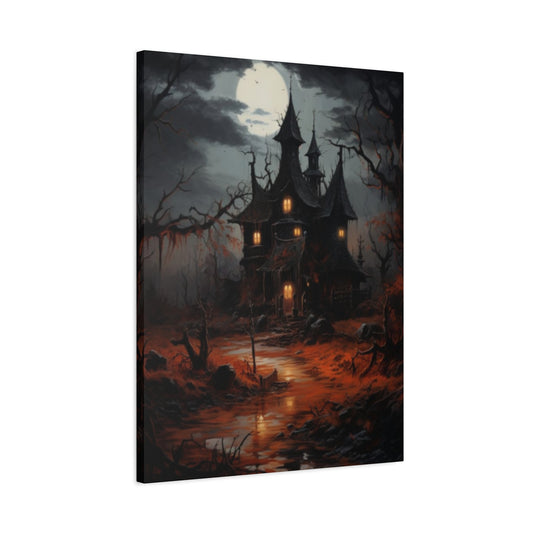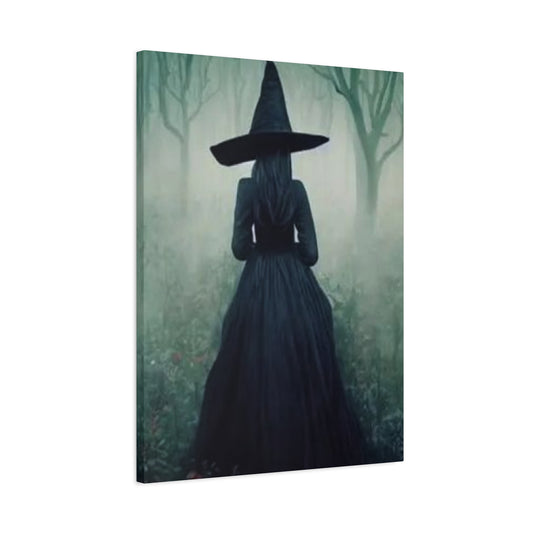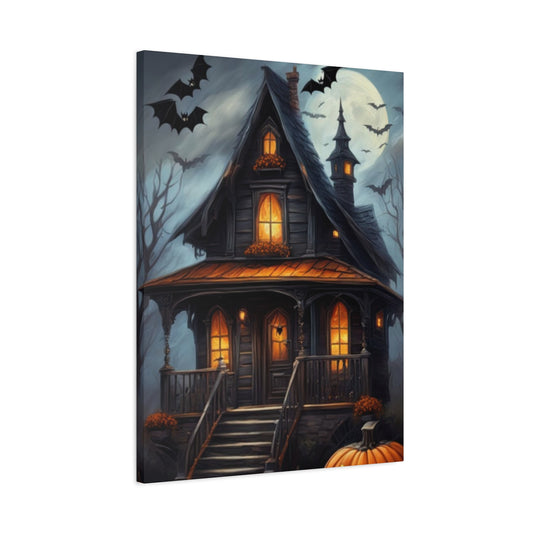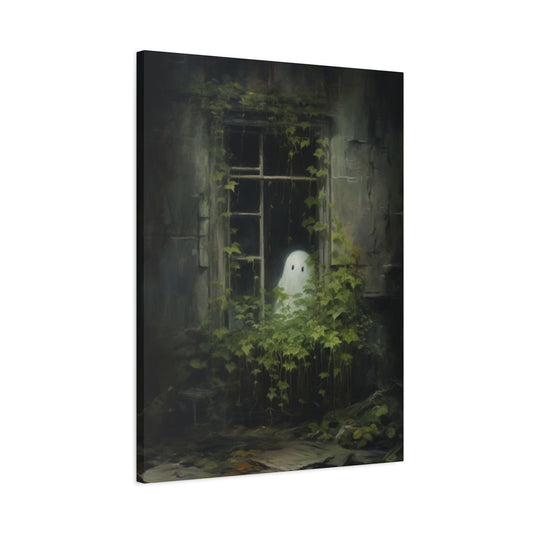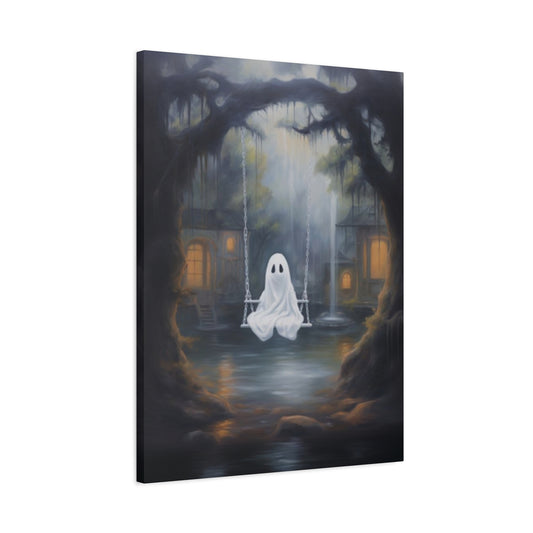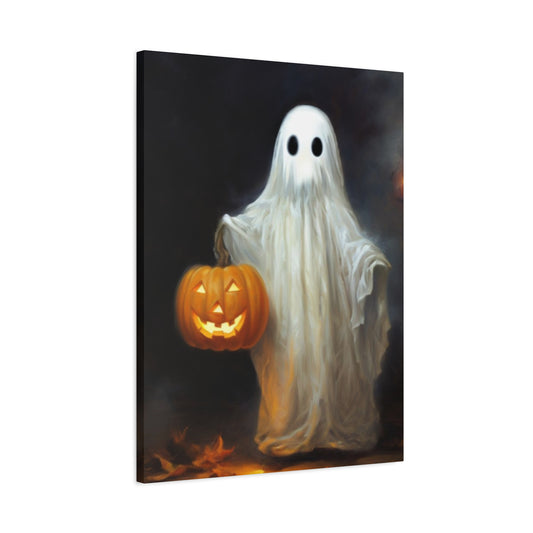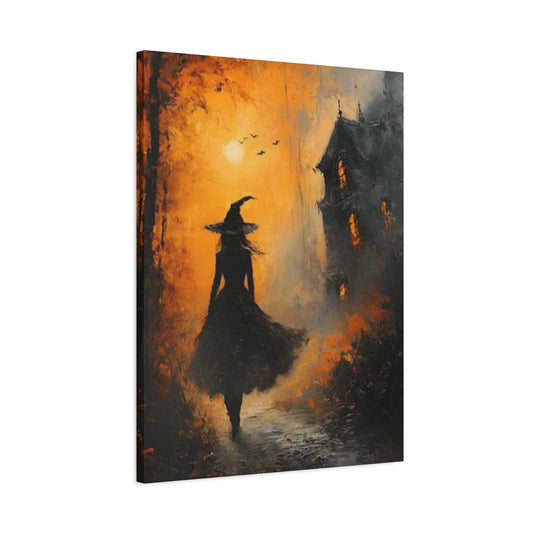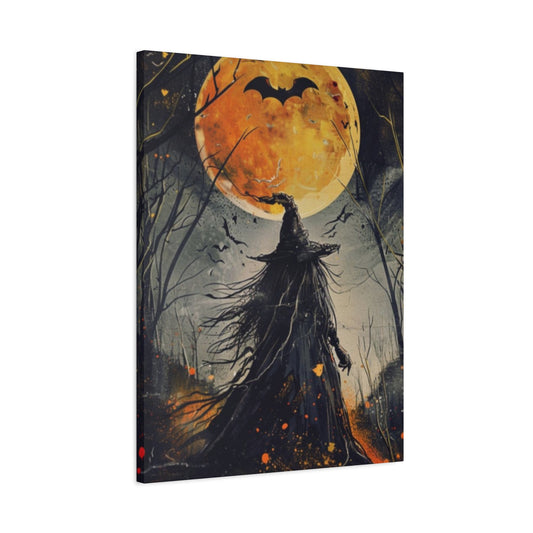Halloween Wall Art Ideas to Make Your Home Both Eerie and Elegant
Spring and Halloween make for an unusual pairing, yet when these two seasonal forces converge, they conjure a world where freshness mingles with mystery. Blossoming flowers may stretch toward the sun, but within the same room, shadows and specters can whisper from the walls. This juxtaposition offers an opportunity to reimagine how Halloween is expressed through interior spaces, moving away from clichéd cobwebs and embracing a more refined sense of decor.
Canvas and poster wall art become powerful tools in crafting this dual identity. Their textures, scales, and imagery allow for versatile design choices that merge gothic ambience with botanical vivacity. Unlike fleeting decorations that vanish once the night passes, these artistic elements remain as enduring companions to seasonal celebration.
The Allure of Canvas and Poster Art
Canvas has long been revered for its tactile surface, absorbing pigment in a way that radiates depth and warmth. Posters, by contrast, provide bold immediacy, their flat surfaces capturing stark imagery in a dramatic sweep. Together, they create an enchanting dialogue within the home. A gallery wall of mixed media can interlace family portraits in eerie costumes with abstract prints of twisted vines or spectral silhouettes. This layering establishes a theatrical yet tasteful environment that transcends the ordinary.
For Halloween, the choice of wall art is more than an aesthetic gesture. It sets the tone of the celebration, offering a stage upon which costumes, gatherings, and rituals unfold. A canvas depicting shadowy branches can frame a room, while a poster of an iconic creature can elicit both fear and fascination. The key lies in selecting imagery that evokes atmosphere without descending into garishness.
Reinterpreting Traditions Through Art
Traditional Halloween decorations have their charm, yet many feel repetitive, their novelty fading after years of use. By weaving art into the seasonal experience, one creates a fresh lexicon of symbols. Instead of plastic skeletons, imagine an abstract composition of fractured geometry in shades of black and crimson. Instead of paper bats taped to windows, envision a canvas portraying spectral wings in a chiaroscuro of moonlight and shadow.
This approach not only elevates the aesthetic but also honors the spirit of Halloween as a time of imagination and metamorphosis. Just as costumes allow individuals to transform, so too can art transform spaces, inviting new perspectives and emotional responses.
A Family Narrative in Wall Art
Halloween is a holiday often entwined with family memories. Children clad in costumes, the annual parade of jack-o’-lanterns, the laughter and shrieks of trick-or-treat adventures—all of these moments deserve preservation beyond a phone gallery. Printing these captured memories onto canvas or poster art creates a visual chronicle that adorns the home while immortalizing fleeting instants.
A hallway lined with canvases depicting Halloween through the years becomes a corridor of nostalgia. The growth of children from playful pumpkins to teenage phantoms unfolds visually, turning personal history into seasonal spectacle. Each canvas or poster becomes not just decor but a chapter in an evolving story.
The Cinematic Influence
Film has always played a central role in shaping Halloween iconography. From the suspense of classic black-and-white horror to the intensity of contemporary thrillers, cinema infuses the season with imagery that lingers in the cultural psyche. Poster prints of favorite films can bring this cinematic essence into the domestic realm, transforming a living room into a personal screening hall of spectral legends.
Choosing a large-format poster, reminiscent of the grandeur of theater lobbies, amplifies this effect. Oversized horror prints cast a spell of immersion, drawing viewers into the narrative world of ghouls, witches, or restless spirits. Such artwork fuses pop culture with home styling, reminding us that Halloween thrives not only on folklore but also on modern storytelling.
Abstract Interpretations of the Season
For those who seek sophistication over overt fright, abstract interpretations offer a compelling alternative. Rather than explicit monsters or haunted mansions, abstract art captures the essence of Halloween through suggestion. Jagged lines may echo claws, while muted colors may evoke the liminality between dusk and night. Patterns inspired by fog, smoke, or fractured glass can carry the same eerie undertones without relying on literal representation.
Abstract wall art has the advantage of blending seamlessly with year-round decor. A piece that conveys a whisper of Halloween in October may still feel relevant in March, ensuring the investment continues to resonate long after the holiday passes. This fusion of versatility and thematic subtlety defines the modern approach to seasonal decorating.
Crafting with Photo Prints
Beyond purchased art, creating personalized decor through photo prints opens pathways for imaginative expression. With a trove of family snapshots or themed photography, one can design custom frames, haunted collages, or even interactive displays. Painting frames in shades of obsidian, layering them with faux cobwebs or metallic accents, and inserting eerie photos creates objects that are as personal as they are atmospheric.
Interactive experiences also emerge from printed images. A scavenger hunt using small prints of monsters hidden around the house turns decoration into a game, making the season participatory and memorable. These playful projects emphasize that Halloween is not only about aesthetic transformation but also about cultivating joy, laughter, and surprise.
Sculpting Shadows with DIY Creations
For those inclined toward craftsmanship, posters can be reimagined into three-dimensional creations. By mounting a large poster of a ghostly figure onto cardboard and cutting around its outline, one can fabricate a life-sized phantom to greet guests at the entryway. This handmade sculpture, though simple in technique, wields immense atmospheric power, casting elongated shadows and adding a tactile sense of presence.
Such projects breathe individuality into decor, ensuring that no two homes feel alike. While mass-produced decorations often lack distinction, handmade pieces infused with personal vision cultivate authenticity.
The Practicality of Reusable Art
A significant advantage of using canvas and poster art lies in their durability. Unlike fragile paper cutouts or plastic novelties that may wither after a single season, these artistic forms endure year after year. With proper storage—cool environments, protective sleeves, acid-free wraps—art retains its vibrancy, reemerging each Halloween as radiant as before.
This reusability speaks to a broader philosophy of sustainability. Seasonal celebrations need not generate excessive waste. By investing in lasting wall art, one contributes to a cycle of reuse, ensuring each Halloween is celebrated with beauty that does not diminish with time.
Curating a Hallway of Haunting Memories
One particularly evocative idea is the creation of a hallway gallery dedicated to Halloween memories. By aligning canvases or posters chronologically, each year’s celebration finds its place within a continuum. Guests walking through such a gallery encounter a visual progression of costumes, carved pumpkins, and atmospheric imagery. The effect is both haunting and heartwarming, a synthesis of family history and seasonal pageantry.
This approach underscores how art transforms ordinary photographs into heirlooms, preserving emotion in tangible form. The walls themselves become storytellers, whispering tales of childhood enchantments and nocturnal revelries.
The Aesthetic of Balance
Halloween decor often risks becoming overwhelming, drowning spaces in excess. Canvas and poster art encourage restraint and balance. A single large piece may suffice to establish mood, eliminating the need for clutter. Strategic placement—above a mantel, along a corridor, near a gathering space—allows the artwork to breathe while commanding attention.
Balancing dark, macabre elements with spring’s natural brightness creates a dialogue between vitality and mortality, light and shadow. This duality embodies the very essence of Halloween: a dance between life and afterlife, celebration and fear.
Family Traditions and the Art of Halloween Storytelling
Halloween thrives on ritual. Each year, families gather to carve pumpkins, dress in costumes, and tell ghost stories by flickering candlelight. These activities transcend mere entertainment; they weave a fabric of tradition that binds generations together. By incorporating canvas and poster wall art into these rituals, families can elevate their traditions into tangible expressions of shared memory. Decor becomes more than an aesthetic choice—it becomes a storytelling device.
Art placed within the home during Halloween sets the stage for these rituals. A large poster of a witch silhouetted against a swollen moon, hung above the fireplace, creates an atmosphere where tales of spirits and folklore flow more easily. A canvas depicting fog-shrouded woods transforms an ordinary living room into a liminal realm. These visual cues act as a backdrop for family customs, ensuring that every act—whether carving a lantern or baking pumpkin bread—feels woven into a larger narrative.
Preserving Memories in Canvas Form
Family memories are fragile if they remain trapped within digital devices. To immortalize them, they must be granted form and permanence. Turning family photographs into canvas or poster art allows Halloween to endure not only as a fleeting holiday but also as a lived chronicle etched into the home.
Imagine a portrait of children dressed as skeletons, their faces illuminated by jack-o’-lantern light. Enlarged and stretched across a canvas, that moment becomes a centerpiece for years to come. Each time the artwork is rehung during October, the memory reawakens, transporting the family back to the laughter and joy of that evening. Such images are no longer ephemeral pixels; they are heirlooms.
This act of preservation adds depth to seasonal traditions. As more canvases and posters accumulate, they tell a story of growth, change, and continuity. A child once dressed as a tiny pumpkin may, years later, appear in a new portrait as a vampire or ghoul. Displaying these side by side creates a timeline, each piece adding a verse to the ongoing poem of family life.
The Corridor of Chronicles
One of the most compelling ways to showcase this evolving tradition is by dedicating a hallway or stairwell to Halloween artwork. Each frame becomes a portal into a different year, and walking down the corridor feels like traversing time itself.
This practice resonates with the idea of ancestral storytelling, where walls are inscribed with tales of those who came before. In this case, the lineage is personal: siblings in costumes, parents joining the fun, pets reluctantly dressed in witch hats. These images are not merely decorations; they are records of belonging, of family identity bound to the rhythms of Halloween.
Guests who wander this gallery encounter more than seasonal style—they encounter the very soul of the household. The laughter of past Halloweens seems to echo through the images, making the walls hum with memory.
Storytelling Through Symbolic Imagery
Not all family traditions need to rely solely on photographs. Posters and canvases can also tell stories through symbolic imagery. Abstract pieces might depict swirling shadows, distorted masks, or silhouettes of ravens in flight. These motifs carry archetypal resonance, connecting personal traditions with the universal language of myth and folklore.
For example, a family that enjoys telling ghost stories about forests and spirits may adorn their walls with art depicting twisted trees and spectral glows. Another household that celebrates Halloween with playful humor may favor whimsical prints of pumpkins with exaggerated grins. In each case, the imagery reflects not only the season but also the family’s unique interpretation of its meaning.
Ritualizing the Hanging of Art
Tradition thrives on repetition, and one way to strengthen the bond between art and family memory is by ritualizing the act of decorating itself. Each October, when the canvases are unwrapped and the posters unrolled, families can treat the process as a ceremonial event. Children can help decide where each piece belongs, perhaps even voting on the arrangement or assisting in hanging them on the walls.
This annual ritual transforms decorating into something sacred. It is no longer a hurried task completed in an afternoon, but a deliberate act of remembrance. The walls are dressed in costume alongside the family, each piece carrying its own aura of memory and anticipation.
The Cinematic Night at Home
Another tradition families may adopt is the Halloween film night, where classic or contemporary horror movies become part of the seasonal calendar. Wall art can enhance this tradition, turning the living room into a cinematic chamber. Posters of iconic films, such as those featuring masked villains or haunted houses, heighten the sense of occasion.
By pairing the act of watching films with the presence of related artwork, families create a layered experience. The art remains on the wall long after the credits roll, acting as a silent echo of the stories experienced together. The result is a fusion of visual and narrative traditions that amplifies the holiday’s emotional resonance.
Crafting Narratives Through DIY Prints
Family traditions are not limited to passive acts of viewing art. They can also involve creation. With photo prints and simple materials, families can craft custom décor that tells their own stories. For instance, children’s drawings of ghosts or monsters can be scanned and transformed into posters. A hand-drawn pumpkin sketch, enlarged onto canvas, takes on the aura of professional art while retaining the innocence of its origin.
These homemade artworks not only personalize the holiday but also give children a sense of ownership. When their creations are displayed alongside family photographs and curated prints, they feel woven into the household narrative. Their drawings become more than ephemeral scribbles; they evolve into permanent symbols of a family’s evolving tradition.
Interactive Storytelling Through Games
Halloween traditions often thrive when infused with playfulness. Printed images can be used to create interactive experiences such as scavenger hunts or storytelling games. Families can print out pictures of monsters, witches, or haunted landscapes, then hide them around the home. The children, equipped with flashlights, can embark on a nocturnal hunt, squealing with delight as they uncover each spectral image.
This tradition merges art with activity, embedding the artwork into the memory of the game. Years later, when the same prints are retrieved and reused, they carry not only their original imagery but also the echoes of laughter and excitement that surrounded them.
Seasonal Photography as Ritual
Another evolving tradition is the family photo shoot. Each year, households can dedicate time to staging a Halloween portrait session. Costumes, props, and lighting transform a living room or garden into a studio of shadows and enchantments. These sessions, whether formal or playful, generate the raw material for future canvases and posters.
The anticipation of seeing these photos transformed into artwork adds to the excitement of the holiday. Families not only enjoy the costumes and festivities in the moment but also look forward to the unveiling of their portraits as enduring wall art. Over time, this becomes a ritual in itself, a tradition of visual storytelling that grows more elaborate with each passing year.
Intergenerational Continuity
Traditions acquire their deepest resonance when they transcend generations. Grandparents may recall their own youthful Halloween customs, while children experience the holiday through modern reinterpretations. By weaving these experiences together through canvas and poster art, families create continuity across time.
A grandmother’s photograph from decades past, perhaps in black-and-white, can be printed alongside her grandchildren’s contemporary portraits. Placed side by side, these canvases form a bridge between eras, illustrating how Halloween has been celebrated across decades. This intergenerational gallery transforms the holiday from a fleeting night into a heritage of imagination and festivity.
Emotional Resonance Beyond October
While Halloween traditions are centered on October 31st, the emotional resonance often lingers. Families who print their memories onto canvas or poster art may find themselves leaving some pieces on the wall year-round. A whimsical pumpkin illustration or a beautifully abstract haunted landscape may feel at home in the living room long after autumn fades.
This continuity reinforces the notion that Halloween is not confined to a single night but represents a larger ethos of imagination, creativity, and storytelling. By extending the life of Halloween art, families keep its spirit alive even as other holidays come and go.
The Cinematic Spell and Abstract Elegance of Halloween Art
For more than a century, cinema has played an indelible role in shaping the way Halloween is imagined. From grainy black-and-white depictions of vampires creeping through castles to modern thrillers drenched in neon and shadow, film has supplied Halloween with a gallery of unforgettable images. Posters and canvas wall art inspired by these films extend that legacy into the home, letting families carry the drama and suspense of the screen into their own living spaces.
A single poster of a classic horror character can set the mood for an entire room. Imagine a looming vampire with piercing eyes, printed in large format and placed above a mantel. The mere presence of such imagery makes the house feel charged with suspense, as though the film might begin playing in the background at any moment. The visual power of cinema lives on when its moments are transfigured into wall art.
A Personal Theater of Phantoms
Halloween lends itself to the creation of atmospheres, and what better way to summon a sense of occasion than by recreating the aura of a theater within one’s own home? Families who dedicate evenings to horror films or supernatural classics can enhance the tradition by surrounding themselves with cinematic posters. These prints function not only as décor but as catalysts for anticipation. As soon as the lights dim and the movie begins, the posters echo the themes on-screen, creating an immersive environment where reality and fiction intertwine.
In a sense, the home becomes a private theater of phantoms, where the ghosts of cinema live on in still images. The impact is not fleeting but sustained, since the posters remain long after the credits roll, silently whispering stories of horror and wonder to anyone who gazes upon them.
Oversized Impact
Scale matters in both cinema and art. Just as films once dominated towering screens in grand theaters, poster prints in large formats can dominate walls with equal intensity. An oversized print magnifies the sense of drama, enveloping the viewer and commanding attention from every corner of the room.
A poster of a haunted mansion in mist, printed at a size that stretches across a wall, transforms a living room into an environment steeped in atmosphere. Guests feel as though they are stepping into a scene, their imaginations triggered by the sheer presence of the art. This approach mirrors cinema’s intent: to suspend reality and invite audiences into an alternate world.
Celebrating Horror Icons
Cinema has given rise to enduring figures that recur each Halloween—witches flying across pale moons, masked stalkers haunting suburban streets, ghouls rising from fog. Posters immortalize these icons, giving them a permanent presence in the home. A canvas featuring a shadowy figure may terrify and fascinate in equal measure, while another displaying a grotesque creature might stir nostalgic memories of films watched in youth.
These images transcend their cinematic origins to become cultural emblems. Each time they reappear on walls, they evoke not just the films themselves but also the traditions surrounding them—family film nights, costume choices, and whispered retellings of plotlines.
Beyond Literal Representation
While cinematic posters offer vivid depictions, not everyone seeks literal imagery. For those drawn to a subtler expression, abstract art provides an alternative that carries the essence of Halloween without overt fright. Instead of a monster’s face, a canvas may feature jagged streaks of crimson slicing through obsidian tones, suggesting menace without spelling it out. Instead of a haunted forest, a composition of layered shadows and distorted forms might evoke the feeling of wandering into the unknown.
This kind of abstraction taps into the psychological dimension of Halloween. It engages the viewer’s imagination, asking them to interpret the imagery and project their own fears or fascinations upon it. The absence of explicit figures creates an open-endedness that can feel more unsettling than literal representation.
The Language of Color and Form
Colors and shapes carry their own symbolic weight, and Halloween décor gains power when these elements are manipulated with intention. Deep purples, smoldering oranges, blood-like reds, and velvety blacks all conjure associations with the season. Swirling lines suggest mist, fractured angles suggest broken glass, and concentric circles echo the hypnotic pull of the supernatural.
Canvas art that employs these motifs without resorting to literal depictions achieves a rare quality: it feels timeless. While a picture of a costumed ghoul may feel season-specific, an abstract piece in shadowy hues may resonate throughout the year. Its seasonal quality comes not from explicit iconography but from mood, tone, and resonance.
The Dance Between Fear and Elegance
Halloween decor often teeters between kitsch and fright. Abstract and cinematic-inspired art offers a pathway toward elegance, where fear is not abandoned but refined. The result is a sophisticated equilibrium: a space that feels haunting yet graceful, unsettling yet inviting.
Imagine a canvas dominated by blurred silhouettes, their edges dissolving into fog-like textures. The image suggests figures present but unreachable, conjuring feelings of unease while remaining visually captivating. Such art does not scream Halloween; it whispers it, and the whisper lingers far longer than the scream.
Creating Atmosphere Without Clutter
Traditional Halloween decorating sometimes leans toward excess—plastic skeletons, cobwebs, and props scattered in every corner. By contrast, the use of poster and canvas art fosters a more intentional approach. A single oversized poster can define an entire room’s atmosphere, eliminating the need for numerous small items. A carefully chosen abstract canvas may provide all the mood-setting necessary, standing as a statement piece amid more minimal surroundings.
This minimalist strategy aligns with modern design sensibilities. Instead of clutter, one finds focus. Instead of cheap tricks, one discovers enduring artistry. The result is a Halloween aesthetic that balances theatricality with refinement.
Storytelling Through Visual Layers
Just as cinema tells stories through sequences of images, wall art can tell stories through composition and arrangement. A collection of posters arranged on one wall might trace the evolution of horror across decades, from grainy silent films to vivid contemporary thrillers. Another arrangement might juxtapose cinematic posters with abstract canvases, creating a dialogue between literal storytelling and interpretive suggestion.
These curated displays turn walls into visual narratives. Each piece contributes to a larger whole, inviting viewers to move from one image to the next, piecing together the silent story embedded within the collection.
Immersion Through Seasonal Curation
One way to heighten Halloween’s impact is by curating wall art seasonally, rotating pieces to reflect the mood of October. Abstracts in dusky tones or horror-inspired posters might appear only once a year, creating a sense of anticipation. When the season ends, they are carefully stored, their absence making their return the following year all the more powerful.
This ritual of rotation mirrors the rhythms of nature—just as leaves fall and bloom returns, so too do artworks vanish and reappear. The home becomes a living organism, changing with the seasons, always surprising yet always familiar.
Homemade Posters Inspired by Cinema
Families who enjoy both creativity and Halloween can merge the two by designing homemade posters inspired by favorite films or abstract ideas. Using photo prints or digital editing, they can craft images that reinterpret cinematic moments in personal ways. A child might draw a beloved monster in crayon, later transformed into a poster that takes on pride of place during Halloween. A parent might design an abstract swirl of colors inspired by the mood of a particular film, turning private interpretation into public décor.
These homemade posters carry both artistic and emotional weight. They become family heirlooms in their own right, treasured not because they are flawless, but because they embody imagination. Each Halloween, re-hanging them is like reviving a creative spirit that never dies.
Sustainability and Longevity
Cinematic posters and abstract canvases share one crucial trait: durability. Unlike disposable decorations, these artworks endure. With careful storage, their colors remain vivid, their surfaces unblemished. Each year, they return with undiminished intensity, ready to set the stage once again.
This longevity makes them sustainable companions for Halloween traditions. Instead of generating waste with throwaway décor, families invest in lasting beauty. Over time, the collection of posters and canvases grows, becoming a library of images that charts not just Halloween but the household’s aesthetic journey.
The Creative Alchemy of DIY Halloween Art and Family Engagement
Halloween carries within it an intrinsic invitation to create. From carving pumpkins to stitching costumes, the season has always encouraged hands-on invention. In a world where mass-produced decorations often dominate, crafting unique art from photo prints, canvases, and posters restores authenticity and individuality. The process of making decorations by hand becomes as significant as the decorations themselves, deepening the emotional resonance of the holiday.
Family participation is at the core of this creative spirit. Parents, children, and even grandparents can contribute their own touches to projects, ensuring that the final results are infused with collective imagination. A home filled with crafted décor feels less like a staged setting and more like a living expression of family identity, alive with stories and laughter.
Transforming Photos Into Haunted Keepsakes
Photo prints are often regarded as mementos of everyday life, but in the context of Halloween, they take on new potential. Old snapshots of costumed adventures can be reshaped into haunting displays by reprinting them in dramatic sizes or unconventional formats. A portrait of a child dressed as a ghost can be enhanced with a painted frame covered in cobweb textures, instantly turning it into a centerpiece of seasonal storytelling.
Experimentation with editing also offers creative pathways. Converting photos to black-and-white, adding sepia tones, or heightening shadows can give even playful images a spectral quality. When these transformed prints are mounted on canvas or arranged into collages, they become artifacts of Halloween memories, simultaneously playful and eerie.
Crafting Frames With Personality
Frames often act as overlooked vessels for art, yet during Hallowee, they can become art in their own right. A simple wooden frame can be coated in matte black paint, streaked with silver, and accented with faux moss to suggest the ruins of an ancient crypt. Others may be decorated with glittering orange tones and plastic spiders, blending whimsy with fright.
Families can gather at a table with brushes, glue, paints, and embellishments, turning a rainy spring evening into a creative workshop. Children may delight in smearing paint with their fingers or sprinkling glitter, while adults add details with precision. Once complete, these frames give photo prints or posters an added layer of personality, becoming permanent companions to the images they hold.
The Haunted Collage
One particularly engaging activity is the creation of a haunted collage. Families can cut images from magazines, combine them with photo prints, and mount them onto large poster boards. Ghosts, bats, skeletal hands, and botanical motifs may overlap, creating surreal landscapes that seem both playful and sinister.
By layering images in unexpected ways, collages evoke the dreamlike logic of Halloween itself, where fantasy and reality blend without clear boundaries. A child’s photo might sit beside a fragment of a twisted tree, while a cut-out of a raven hovers overhead. Each collage becomes an original piece of art that reflects the imagination of the family, impossible to replicate elsewhere.
Scavenger Hunts With Printed Monsters
Halloween thrives on games that combine suspense and surprise. Photo prints provide a perfect medium for such play, particularly in the form of scavenger hunts. Small images of monsters—vampires, mummies, ghouls—can be printed, cut out, and hidden throughout the home or garden. Children, armed with flashlights or small baskets, can embark on a quest to discover them.
This activity transforms art into an interactive experience. Each time a hidden creature is uncovered, laughter erupts, and the prints themselves take on a narrative role within the game. Afterward, the found images can be collected into a scrapbook or displayed on a wall, preserving not only the artwork but the memory of the hunt.
Creating Spectral Cutouts
Posters hold another untapped possibility: they can be reshaped into life-sized decorations. By mounting a poster of a ghostly figure onto cardboard and carefully cutting along its outline, families can fabricate a full-sized specter to greet visitors at the door. Positioned in a dimly lit hallway or by a window, these figures cast uncanny silhouettes that blur the boundary between art and reality.
Children often find immense joy in helping to design or color these cutouts. A witch may be given a mischievous grin, a skeleton may sport a painted bow tie, or a vampire may be customized with glittering eyes. These playful alterations ensure that each cutout reflects the personality of its makers, balancing fright with humor.
Lanterns From Printed Imagery
Another inventive craft involves using photo prints or posters to create lanterns. By wrapping printed imagery around glass jars and placing small LED candles inside, families can design glowing vessels that project ghostly images into the room. A print of a spider web, when illuminated from within, casts intricate patterns of shadow across the walls.
These lanterns bring light into the season of shadows, adding depth and atmosphere to any gathering. They can line walkways, illuminate dining tables, or serve as gentle night lights for children who revel in the spooky season but fear complete darkness.
Storytelling Through Art Games
Beyond decoration, photo prints and canvases can be used to inspire stories. Families might gather a collection of eerie images—an empty forest path, a crumbling house, a masked figure—and place them on a table. Each family member then takes turns weaving a tale that links the images together, building a communal ghost story.
This activity transforms passive viewing into active creation. The artwork itself becomes a prompt for imagination, giving rise to narratives that may be chilling, funny, or fantastical. These stories can then be written down, paired with the images, and preserved as part of the family’s Halloween tradition.
Seasonal Portrait Sessions
One enduring ritual that merges creativity with memory-making is the seasonal portrait session. Families can stage their own Halloween photo shoots, dressing in costumes and posing against homemade backdrops. A sheet painted with swirling shadows or a wall draped with posters of haunted landscapes can serve as the perfect stage.
These sessions become as memorable as the costumes themselves. Children may ham it up as mischievous goblins, while parents strike dramatic poses as witches or phantoms. Once printed onto canvas, the portraits take on a monumental quality, transforming playful moments into artistic treasures. Year after year, these portraits can be added to the household collection, documenting the evolving cast of characters that make up the family’s Halloween history.
Fusing Craft With Seasonal Nature
Halloween in springtime offers an unusual opportunity to integrate natural elements into handmade art. Fresh blossoms can be pressed and combined with eerie images in collages, creating a fusion of vitality and decay. Leaves can be painted black or silver and used as frames for photo prints, while twigs can be arranged around canvases to suggest haunted forests.
This blending of natural and artistic elements connects the celebration to the environment. It underscores the duality of Halloween in spring—where blooming gardens coexist with spectral imagery, reminding us of the interplay between life and mortality.
Teaching Through Creativity
These DIY projects carry value beyond decoration. They teach children patience, collaboration, and imagination. Crafting frames or assembling collages requires decision-making and problem-solving, while scavenger hunts foster curiosity and observation. Families that engage in these activities are not only celebrating Halloween but also nurturing creativity in its purest form.
The projects also encourage sustainability, as many crafts can be made from repurposed materials—cardboard boxes, jars, scraps of fabric, and leftover prints. By giving new life to these materials, families honor the resourceful spirit that has always underpinned Halloween traditions.
Longevity of Handmade Creations
Unlike store-bought decorations that may break or lose novelty, handmade pieces often endure in both physical and emotional ways. A child’s hand-painted frame, though imperfect, will be cherished long after the paint chips. A poster cutout, patched with tape from years of reuse, will become part of family lore. These imperfections do not diminish the decorations; they enrich them, carrying the weight of memory and effort.
As the years pass, the collection of DIY pieces grows. Each item tells a story of its creation—who painted it, who laughed while gluing glitter, who found the most monsters during the scavenger hunt. Together, they form a tapestry of tradition that binds the family ever closer to the holiday.
Preservation, Sustainability, and the Timelessness of Halloween Art
Halloween is fleeting, yet the artwork and decorations created for it can endure for decades when treated with care. Canvas and poster wall art, unlike ephemeral props, possess the potential to become perennial companions. Proper storage is essential to ensure that colors remain vivid, materials intact, and surfaces free from damage caused by environmental factors.
Climate plays a critical role. Extremes of humidity or temperature can warp canvas frames or cause ink to fade on posters. By storing artwork in controlled environments, households ensure that the integrity of each piece is maintained, safeguarding the visual and emotional impact that comes with repeated seasonal display.
Rolling Versus Folding
For posters in particular, the method of storage can determine longevity. Folding, while convenient, introduces permanent creases that compromise the aesthetic of the piece. Rolling posters carefully, then sliding them into protective sleeves or tubes, preserves their smooth surface and maintains the vibrancy of printed imagery.
This technique, simple as it is, allows for the repeated use of posters year after year. Each October, they can be unrolled as fresh and striking as the first time, ready to contribute to the Halloween atmosphere without any visible signs of aging or wear.
Protecting Canvases
Canvases, though sturdier than posters, still require attention. Storing them back-to-back can save space, but the surfaces that touch should always be clean and dry. Wrapping each piece in acid-free paper or soft cloth adds a layer of protection, preventing scratches, dust accumulation, and fading.
Proper labeling of each canvas or poster with its year or theme streamlines the retrieval process, reducing the time and stress associated with seasonal decorating. A simple label can transform storage from chaotic to organized, ensuring that treasured pieces are easy to locate and ready for display.
Sustainability Through Reuse
One of the most compelling aspects of canvas and poster art is sustainability. Unlike disposable plastic decorations or mass-produced novelties, these artworks are inherently reusable. Their durability allows families to celebrate Halloween year after year without contributing to waste, supporting a more environmentally conscious approach to the holiday.
Handmade pieces and repurposed materials further enhance this ethos. Cardboard, jars, leftover paint, and old photo prints can all find second lives as frames, lanterns, or collages. Each act of reuse reinforces the principle that creativity and sustainability can coexist, and that the joy of the season need not come at the cost of environmental stewardship.
The Emotional Value of Longevity
Beyond the practical, preserving artwork sustains emotional continuity. A canvas depicting a child’s first costume, or a poster capturing a beloved family tradition, becomes more than decoration—it is a repository of memory. Each year that these pieces are reintroduced into the home, they carry echoes of laughter, mischief, and wonder, reinforcing the bonds between generations.
Over time, a collection of artwork transforms into a living archive. Guests and family members alike can trace the evolution of costumes, celebrations, and creative projects across the years. Walls become storytellers, narrating the family’s Halloween history in visual form.
Rotating Displays and Seasonal Rituals
The practice of rotating seasonal artwork adds ritualistic value. By selectively displaying certain pieces each year, families create anticipation and maintain a sense of novelty. Posters and canvases not used in one season can be carefully stored for the next, preserving their impact while ensuring the décor never feels repetitive.
This cyclical approach mirrors natural rhythms—the falling of leaves, the return of blossoms, and the waxing of the moon. It connects Halloween décor to a broader temporal framework, reinforcing the idea that each celebration is part of an ongoing cycle rather than a standalone event.
Integrating Art Into Daily Life
Preserved artwork need not be confined to October alone. Some pieces, particularly abstract canvases with subtle seasonal undertones, can enhance living spaces year-round. Shadowy forms, muted tones, and surreal motifs create intrigue in any season, allowing families to enjoy the artistry beyond the confines of Halloween.
This practice fosters a continuous relationship with the artwork. Rather than viewing decorations as temporary or disposable, families treat them as enduring elements of home design, enriching everyday life with the same aesthetic and emotional depth that makes Halloween special.
The Philosophy of Timelessness
At the heart of preservation is a deeper philosophy: that art can transcend temporality. By treating canvas and poster wall art as lasting companions, families embrace the notion that Halloween is not merely a date on the calendar but a recurring narrative. Each piece becomes a vessel of continuity, linking past celebrations with present enjoyment and future anticipation.
This perspective encourages intentionality in creation and curation. Families select pieces not just for immediate impact but for their potential to resonate across years. The result is a collection that matures with the household, growing richer in meaning as memories accumulate.
Educational and Cultural Value
Maintaining artwork also offers educational opportunities. Children can observe the evolution of artistic styles, note changes in costume trends, and recognize how their own creative skills have developed over time. Beyond personal memory, the collection becomes a cultural artifact within the home, reflecting seasonal traditions and aesthetic choices that define a family’s identity.
Through engagement with preserved art, children learn patience, care, and appreciation for craft. They understand that beauty can be enduring and that creative effort invested today may delight and instruct tomorrow. This lesson transcends Halloween itself, fostering lifelong respect for artistry and heritage.
Display as a Living Archive
Displaying preserved art transforms walls into living archives. Canvases and posters arranged chronologically or thematically provide a narrative structure, allowing viewers to traverse the history of past Halloweens at a glance. A hallway lined with portraits of children in costumes, collages of family projects, and abstract pieces inspired by seasonal motifs becomes a visual anthology, where each piece contributes a chapter.
This method of curation elevates the role of décor. It is no longer simply decorative; it is narrative, pedagogical, and deeply personal. Guests encountering such walls gain insight into the family’s traditions, creativity, and seasonal engagement, experiencing the holiday not as a fleeting spectacle but as an enduring story.
Preserving the Craft of DIY Creations
Handmade projects, particularly those involving family collaboration, require special consideration. Cardboard cutouts, painted frames, and collaged posters are vulnerable to bending, moisture, and dust. Protective storage, careful handling, and occasional restoration ensure that these items maintain their integrity across the years.
Preservation also honors the effort invested in creation. Each mark of paint, each cut or glued embellishment, represents time, attention, and imagination. Maintaining these pieces signals respect for the creative labor and acknowledges its contribution to the household’s seasonal identity.
Seasonal Rotation and Exhibition
Some families adopt exhibition-style practices, creating temporary displays for Halloween while keeping others in reserve. This approach balances novelty with sustainability. One year, abstract canvases may dominate the walls, evoking mood and atmosphere. Another year, family portraits, collages, and cutouts may take center stage.
Such rotation ensures that the décor remains dynamic and engaging, preventing stagnation while preserving cherished pieces. It also reinforces the seasonal ritual, making the act of decorating itself a meaningful event, anticipated with excitement each October.
The Intersection of Aesthetics and Memory
Preserved Halloween art occupies a unique intersection: it is both aesthetic and mnemonic. On one hand, canvases and posters contribute visual intrigue, setting tone, atmosphere, and style. On the other hand, they anchor memories, carrying emotional weight that connects past celebrations to the present.
This duality defines their value. Unlike disposable decorations, which vanish with the season, enduring art maintains relevance, offering aesthetic pleasure and emotional continuity in equal measure. It encourages households to treat Halloween not merely as a transient festival but as an evolving artistic and familial practice.
Passing Down the Collection
As the years accumulate, preserved art assumes an intergenerational role. Children who contributed to DIY projects or appeared in photo prints may eventually take the collection with them, maintaining continuity of tradition as they create new households. Parents may hand down crafted frames, collages, and posters, offering both tangible items and the stories they contain.
In this way, Halloween artwork transcends its initial function as decoration. It becomes a conduit for heritage, memory, and family identity, offering both aesthetic and emotional richness to future generations.
Sustainability, Practicality, and Beauty
The practice of preserving canvas and poster art embodies an elegant combination of sustainability, practicality, and beauty. Durable materials, careful storage, and rotation enable households to enjoy the same pieces year after year, reducing waste and creating a repository of meaningful décor. The investment of time and attention pays dividends in aesthetic impact, emotional resonance, and long-term enjoyment.
This philosophy elevates Halloween beyond fleeting spectacle, framing it as a cultivated season in which artistry, memory, and participation intertwine. The decorations themselves become part of the story, a permanent testament to creativity and care.
Conclusion
Halloween is more than a single night of costumes and candy; it is a canvas for creativity, memory, and tradition. Through the careful curation of poster and canvas wall art, families can transform their homes into immersive spaces where imagination, elegance, and a touch of spookiness coexist. These artworks serve as vessels of storytelling, preserving laughter, playful mischief, and the evolution of seasonal rituals year after year. From cinematic inspiration to abstract expression, from DIY crafts to interactive games, each piece contributes to a living archive that chronicles family history while enriching the atmosphere of the holiday. Proper preservation and sustainable practices ensure these treasures endure, allowing them to be enjoyed for decades. Ultimately, Halloween becomes a celebration of artistry, memory, and connection—a seasonal ritual that transcends fleeting trends, blending aesthetic sophistication with heartfelt tradition and turning every home into a timeless sanctuary of enchantment and wonder.











